Finished! Looks like this project is out of data at the moment!
FISHstory Volunteers – You’re Rock Stars! Thanks to your incredible efforts, every photo in our current FISHstory archive has now been classified. Our team is diving into data analysis, and we’ll be updating the results section in the coming months.
We’ve also scanned a new batch of historic photos, and we’re excited to begin processing them for addition to the project this summer. Stay tuned — there’s more FISHstory on the way!
Results
The FISHstory project wouldn’t be possible without so many amazing partners and volunteers. So first off – we wanted to thank you for all of your hard work and valuable contributions to this project! A summary of initial findings from the pilot project are below.
Pilot Project Key Findings
The FISHstory pilot project had three main components: digitizing and archiving historic photos, describing for-hire catch composition via Zooniverse, and developing a method to estimate fish size in the photos. Key findings from these components are highlighted below.
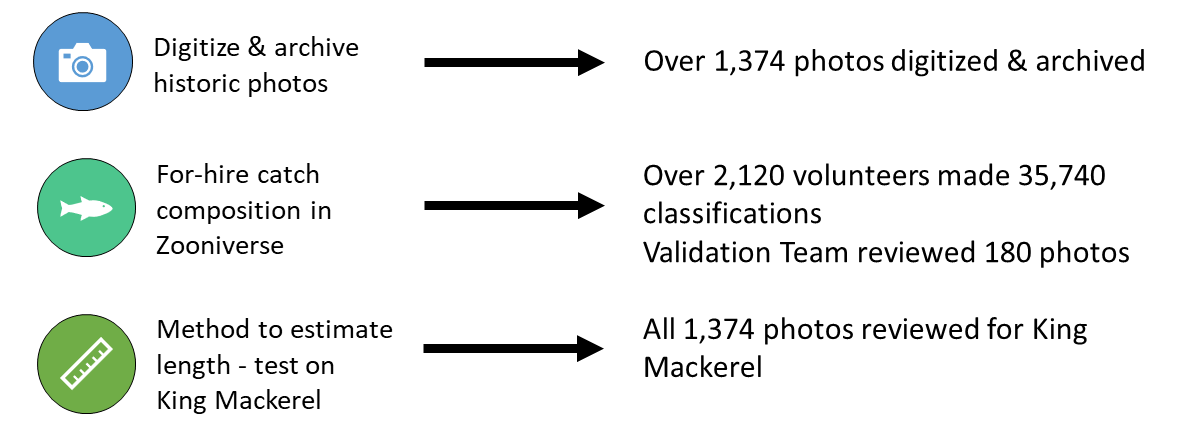
Historic Photo Overview
The photos in the FISHstory project help describe the beginning of the for-hire fishery in the Daytona Beach, FL area. The graphs below provide an overview of the historical photos included in this pilot project. A total of 1,347 photos were digitized and archived as part of this project. The photo dates ranged between 1949 – 1975. Photos represented trips taken from all months with the most photos between April and August likely mimicking the effort across vessels in this fishing fleet.
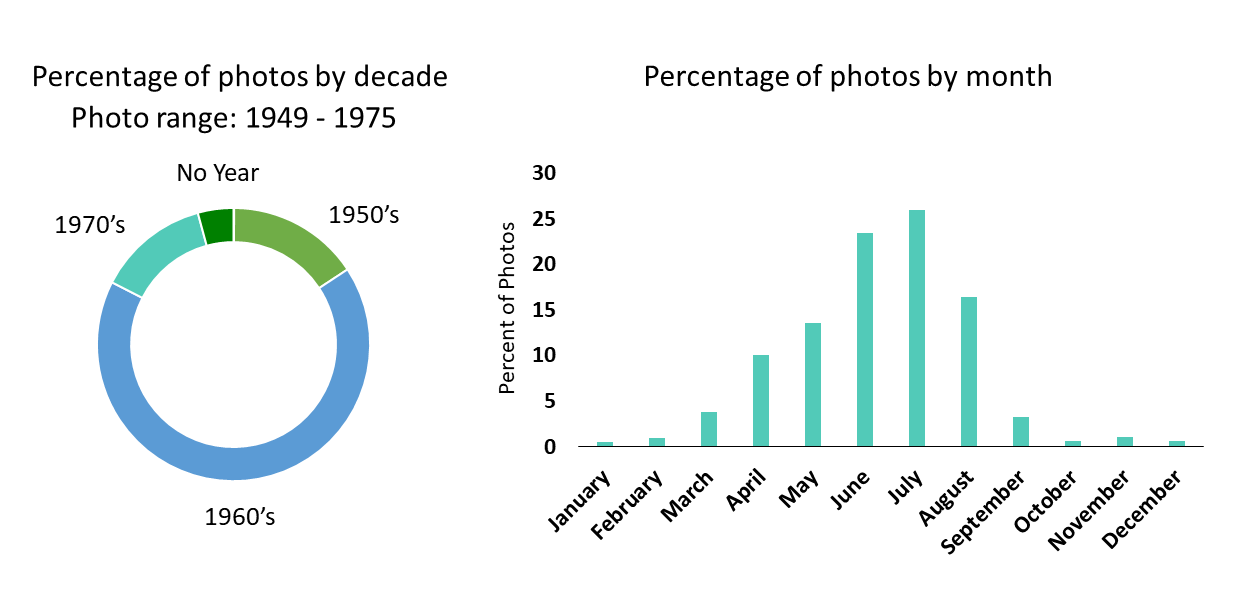
At least 17 vessels were represented in the photos over the time period. However the majority of photos were from five main vessels: the Flamingo, the Mako, the Broadbill, the Miss Juanita, and the Marianne.

Species Composition & Catch Rates
To describe the catch information collected through these photos, we are using a series of box plots. The dark line in the center of the boxes is the median or middle value. The box itself represents the middle 50% of the data. The whiskers on the top and bottom of the boxes show the interquartile ranges. Dots outside of the whiskers show any data outside 1.5x the interquartile ranges.
The graph below describes the total fish harvested per person over five-year time blocks. The median harvest per person was highest in the 1955 time block and gradually decreased over time.
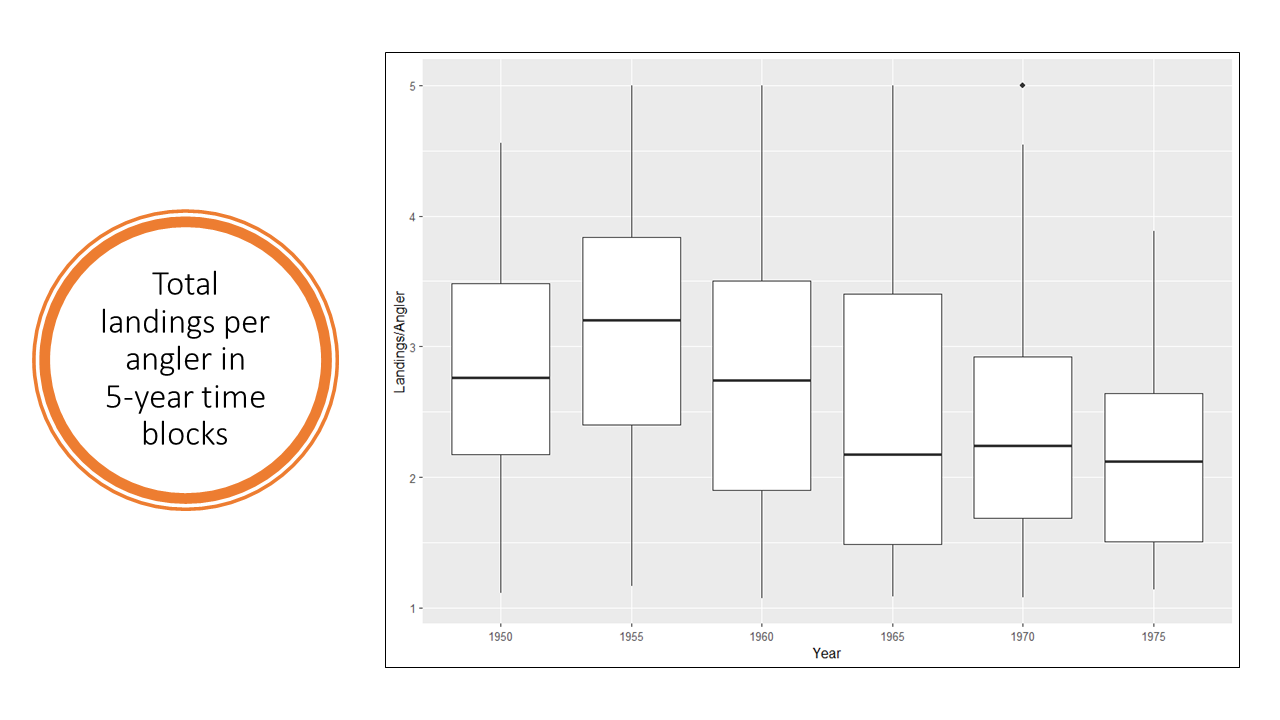
The graph below describes the total catch harvested per person by month.
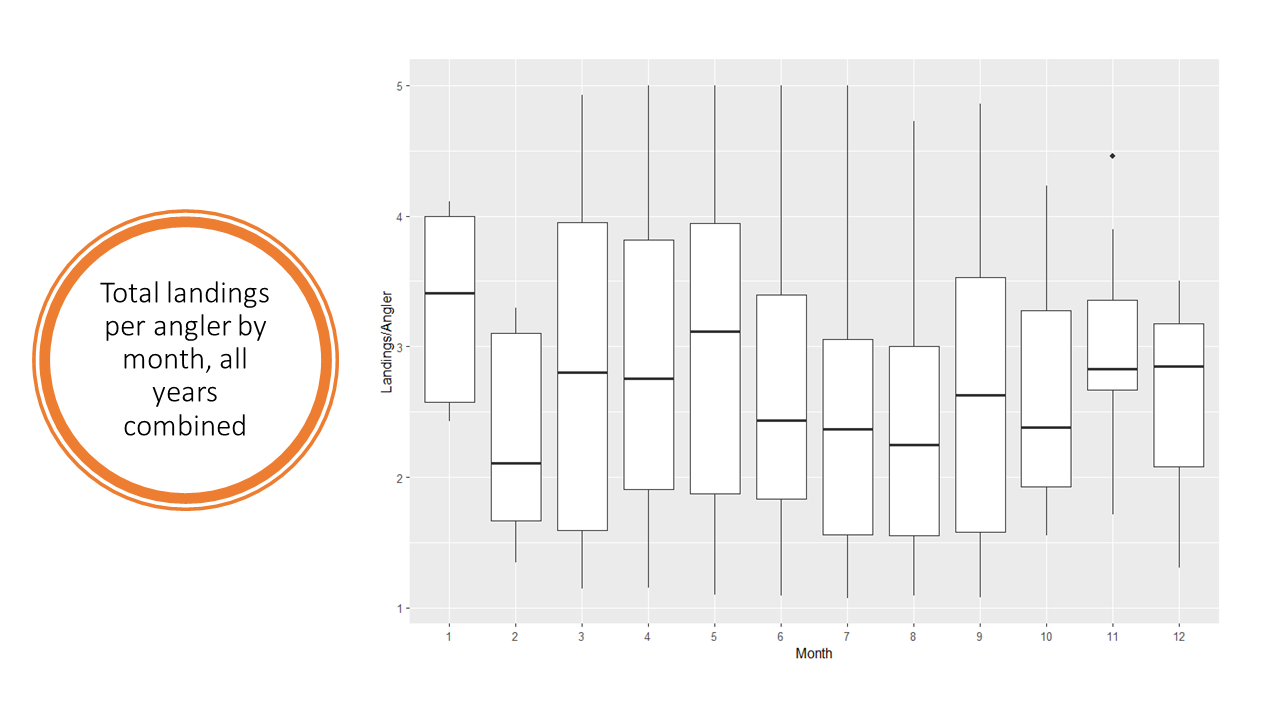
When there was substantial volunteer disagreement on the fish species and counts in a photo, a Validation Team of fish identification experts reviewed the photo. The Validation Team reviewed a total of 180 photos and typically reviewed some of the most challenging photos. This graph compares the estimates by volunteers with those by Validation Team members for these 180 photos. The closer the difference is to zero, the more similar the two groups were to each other. If the difference was positive, the Validation Team counted more of a particular species. If the difference was negative, the volunteers counted more of a particular species. When looking at these data as a whole, the agreement between the Validation Team and volunteers was pretty good. Very few species had bias in counts with the exception of Black Seabass and Other Snapper. The biggest differences were seen between Black Seabass, Other Snapper, Obstructed Fish, and Red Snapper.
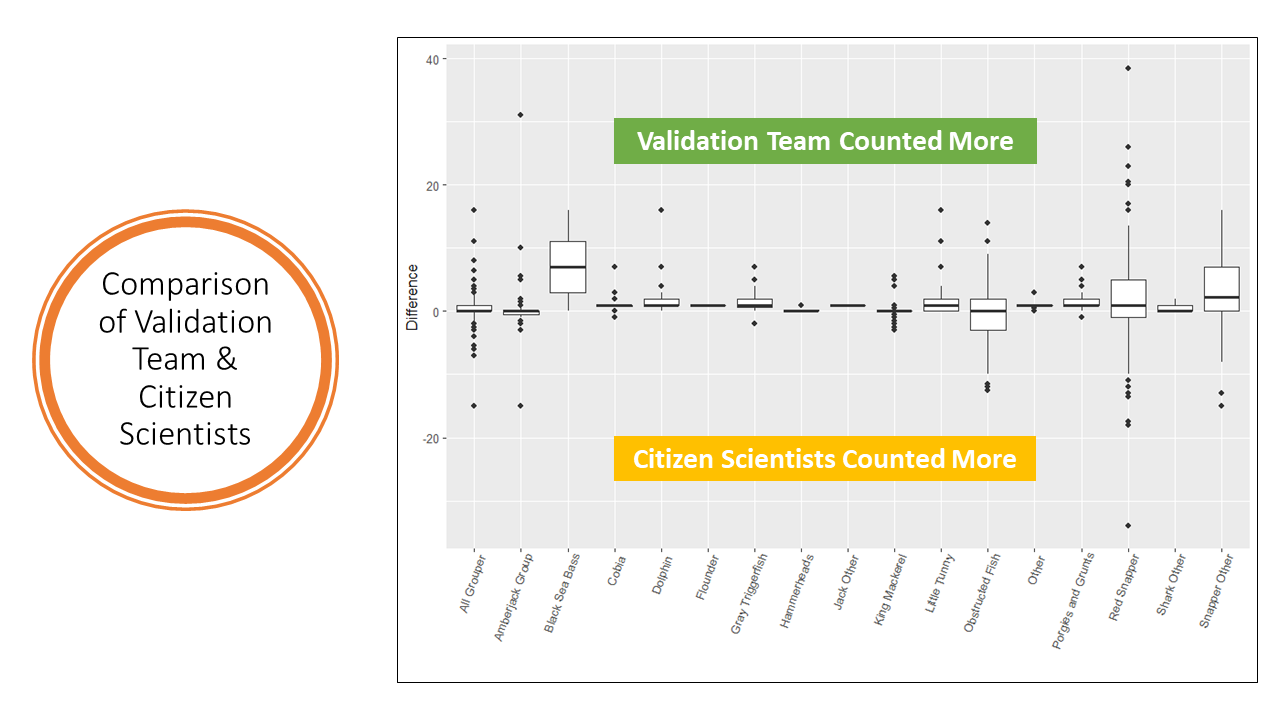
The graphs below show the harvest per person for some of the species most frequently seen in the photos: the Grouper species group, Red Snapper, King Mackerel, and the Amberjack species group. When checking out these graphs – be sure to look at the difference in scale on the left hand side of the graphs for the different species. Species that were caught more frequently (e.g. Red Snapper) have a larger range of catch rates. The graphs below show these data over five-year time blocks and by month (all years combined).
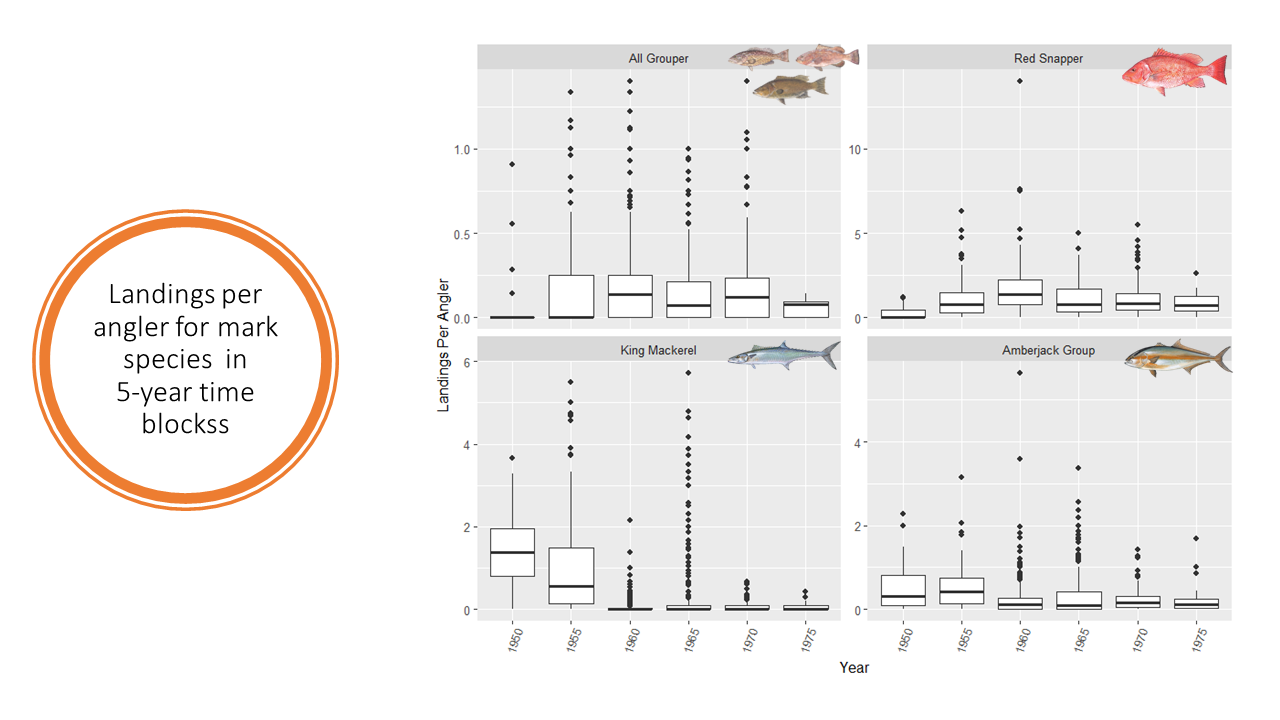
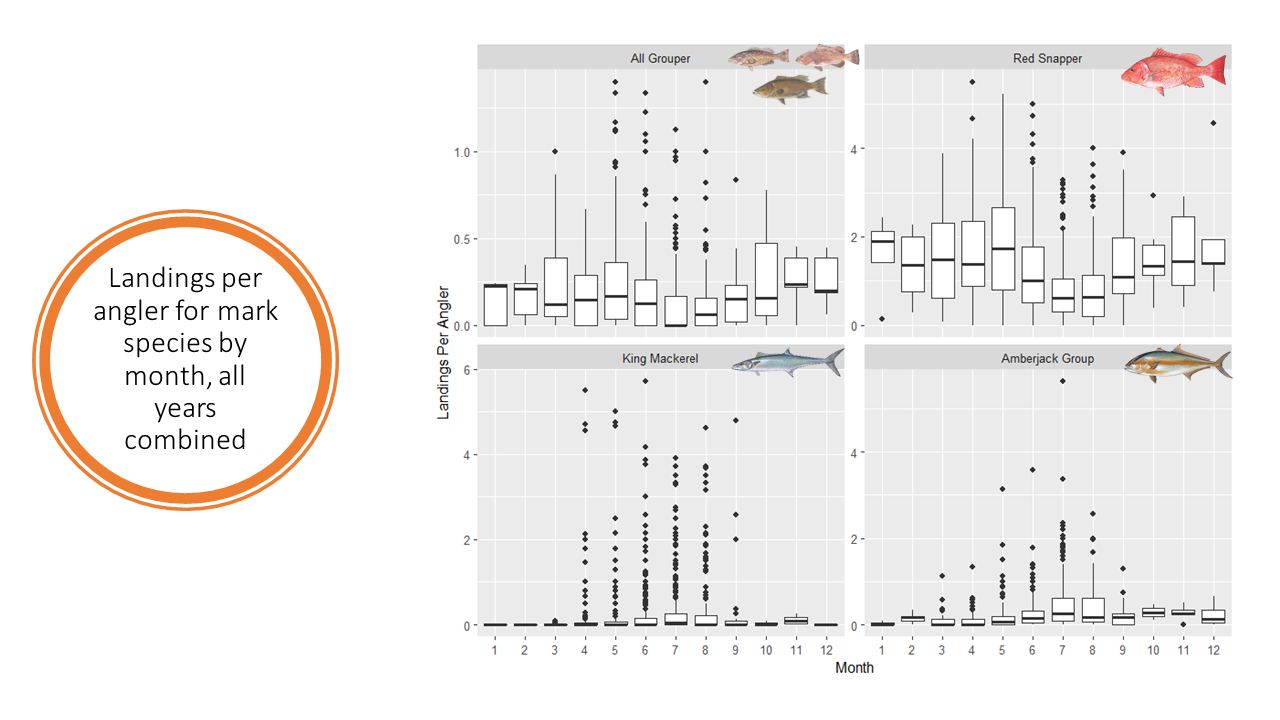
Length Component
Outside of Zooniverse, the FISHstory team developed a method to estimate fish size in the photos using the open-source software, Image J. The method developed uses the lumber in the fish leaderboards as a scale. As part of the FISHstory pilot project, this method was tested on King Mackerel. An illustrated example of completed length measurements from a FISHstory photo are in the figure below. The yellow lines represent scalar measurements of the lumber. The red lines represent King Mackerel measurements. The pixel measurements from the scalar were used to estimate the size of the fish.
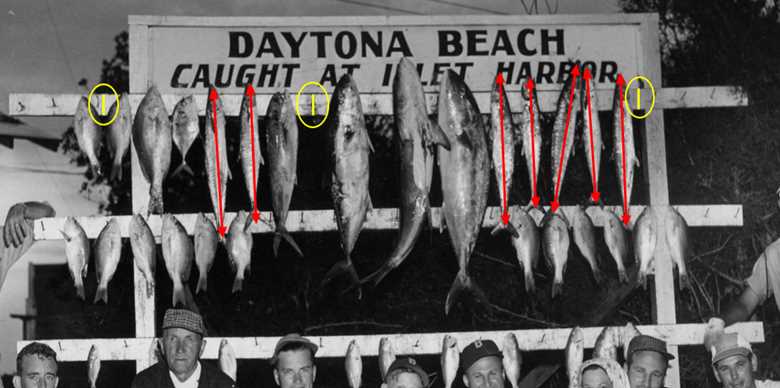
The graph below shows the modal length of King Mackerel measured in the historical photos over time. The modal length ranged between 19 - 37 inches fork length.
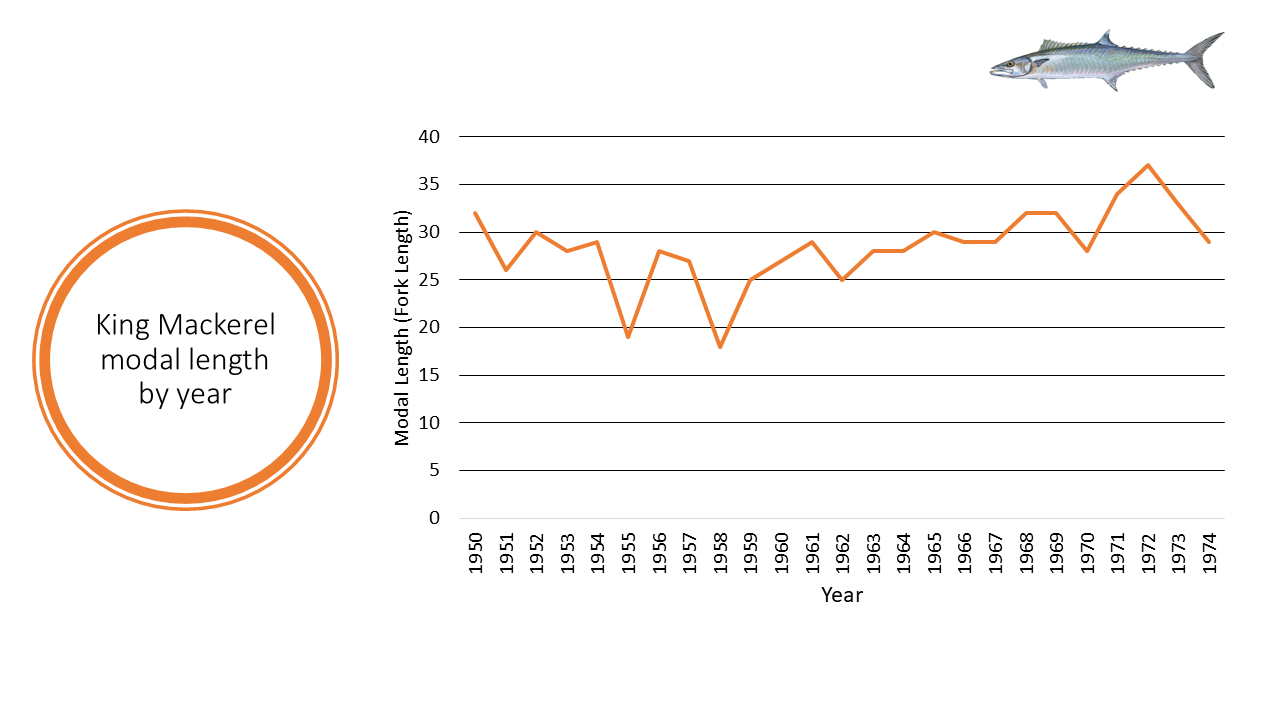
Key Takeaways & Next Steps
The methods developed for archiving and analyzing historic photos through the FISHstory project show a lot of promise. Volunteers (like all of you!) made valuable contributions to analyzing these photos. The data collected through FISHstory are important to helping us better understand the the size and type of fish species that were caught during this historic time period. Exploring fisheries of the past through these photos can help us better understand the health of fish stocks today and into the future. As we move forward with FISHstory, we are exploring ways to expand the project to cover more geographic locations across the US South Atlantic region and expand the time range of photos archived and analyzed through the project.
We're excited to share that we've received funding from a grant from the Atlantic Cooperative Statistics Program to grow and expand the FISHstory project! Over the last year, we've been working with fishermen and other stakeholders along the South Atlantic U.S. to grow our archive of historic photos. We're hoping to re-launch the FISHstory project with these new photos in 2024.
Interested in hearing more about FISHstory pilot project findings?
The South Atlantic Fishery Management Council hosted a seminar on the FISHstory pilot project on August 9, 2022 at 1pm EDT. The presentation focused on describing the processes developed to describe catch from historical photos, the technique used to estimate lengths of King Mackerel, lessons learned during the pilot project, and highlight the amazing group of folks who contributed to the project. A recording of the presentation is available at the link below.